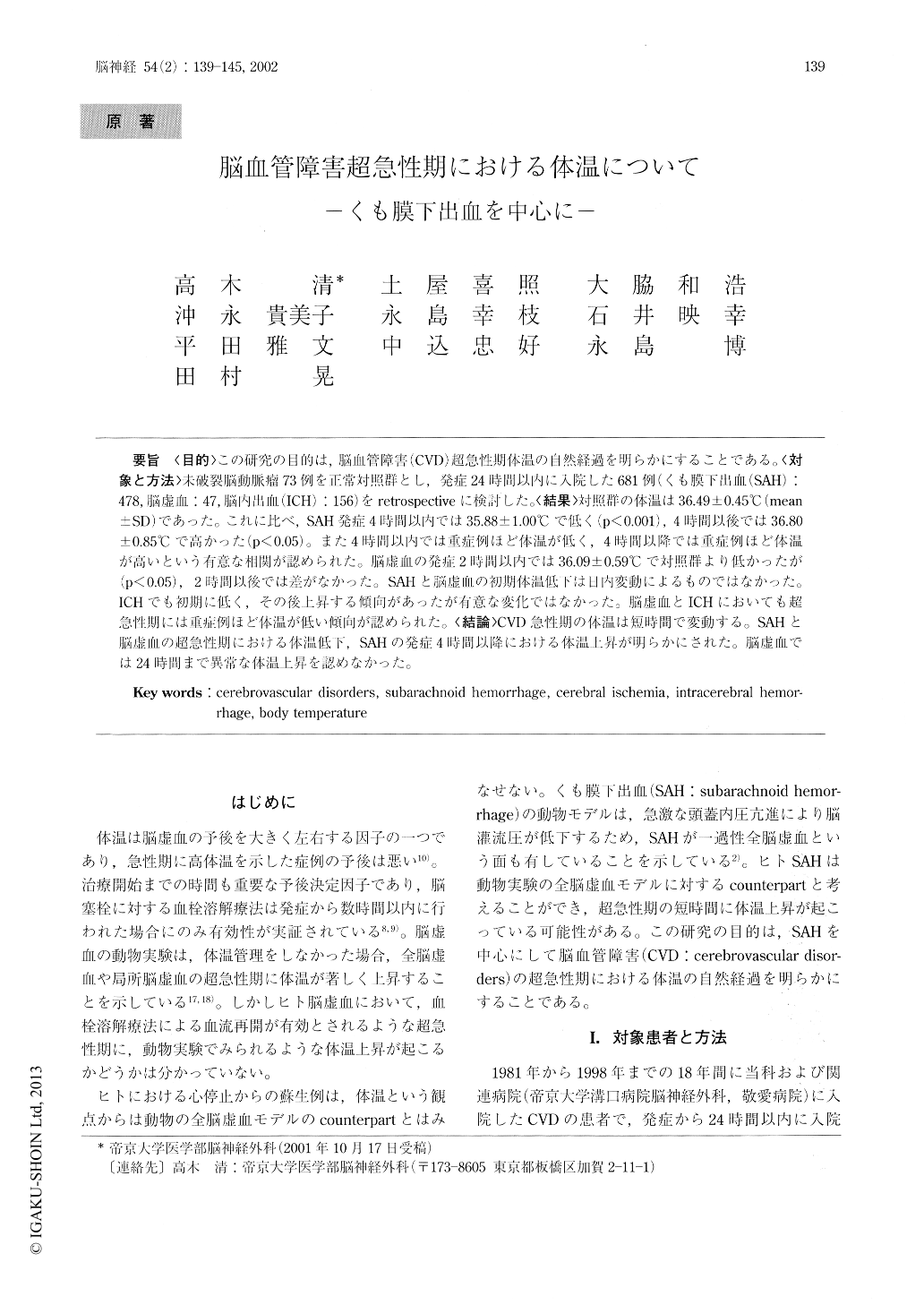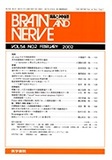Japanese
English
- 有料閲覧
- Abstract 文献概要
- 1ページ目 Look Inside
〈目的〉この研究の目的は,脳血管障害(CVD)超急性期体温の自然経過を明らかにすることである。〈対象と方法〉未破裂脳動脈瘤73例を正常対照群とし,発症24時間以内に入院した681例(くも膜下出血(SAH):478,脳虚血:47,脳内出血(ICH):156)をretrospectiveに検討した。〈結果〉対照群の体温は36.49±0.45℃(mean±SD)であった。これに比べ,SAH発症4時間以内では35.88±1.00℃で低く(p<0.001),4時間以後では36.80±0.85℃で高かった(p<0.05)。また4時間以内では重症例ほど体温が低く,4時間以降では重症例ほど体温が高いという有意な相関が認められた。脳虚血の発症2時間以内では36.09±0.59℃で対照群より低かったが(p<0.05),2時間以後では差がなかった。SAHと脳虚血の初期体温低下は日内変動によるものではなかった。ICHでも初期に低く,その後上昇する傾向があったが有意な変化ではなかった。脳虚血とICHにおいても超急性期には重症例ほど体温が低い傾向が認められた。〈結論〉CVD急性期の体温は短時間で変動する。SAHと脳虚血の超急性期における体温低下,SAHの発症4時間以降における体温上昇が明らかにされた。脳虚血では24時間まで異常な体温上昇を認めなかった。
〈Backgrounds and Purpose〉Body temperature in the acute phase of cerebrovascular disorders (CVDs) may influence the outcome. However, the natural course of body temperature after CVDs has not yet been clarified. The purpose of this study was to eluci-date the natural courses of body temperature after CVDs.
<Patients and Methods> We retrospectively investi-gated 681 patients with CVDs (subarachnoid hemor-rhage (SAH): 478, cerebral ischemia: 47, intracerebral hemorrhage (ICH): 156) who were admitted within 24 h after onset. The body temperature was measured with an electronic thermometer at the axilla on admis-sion.

Copyright © 2002, Igaku-Shoin Ltd. All rights reserved.


